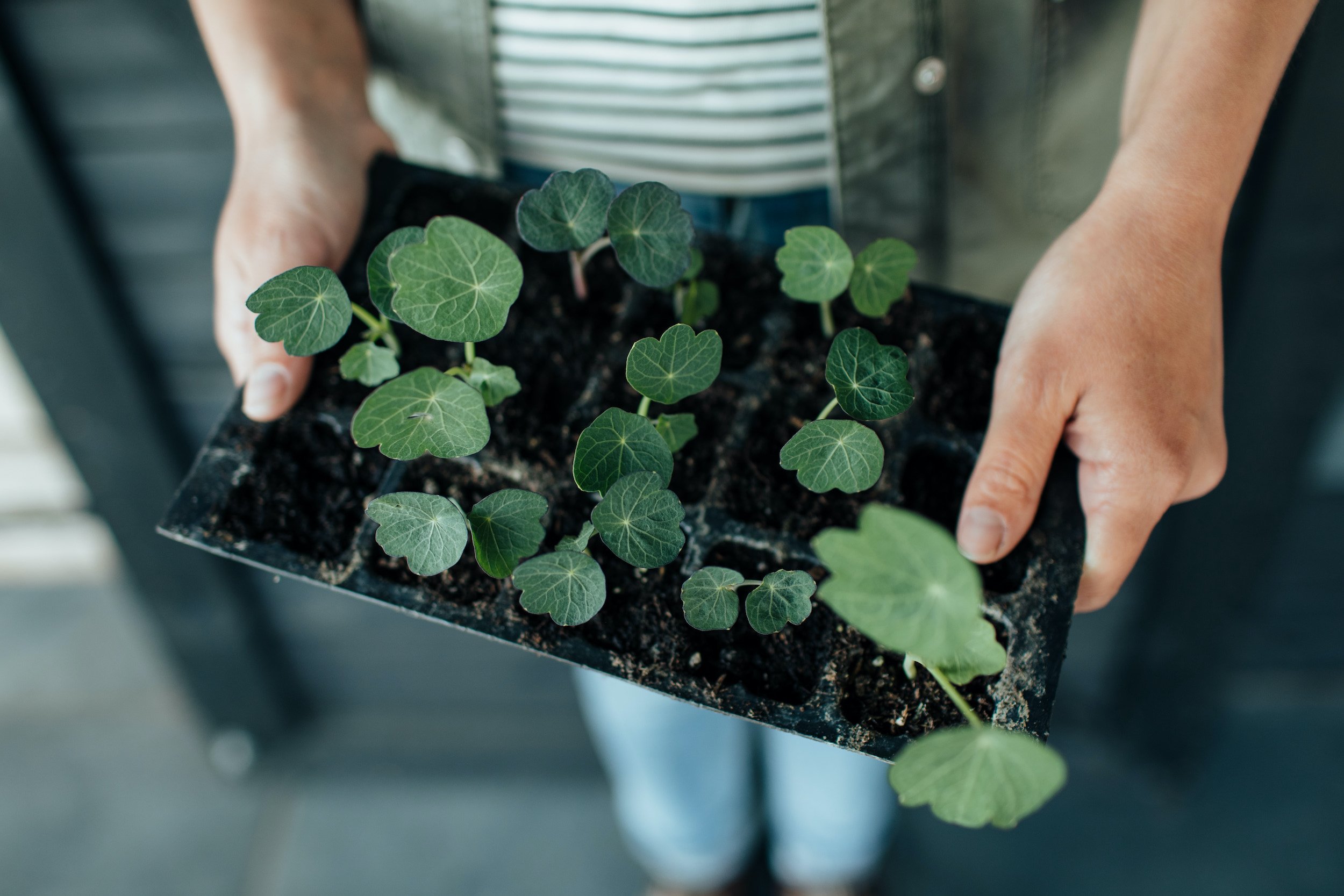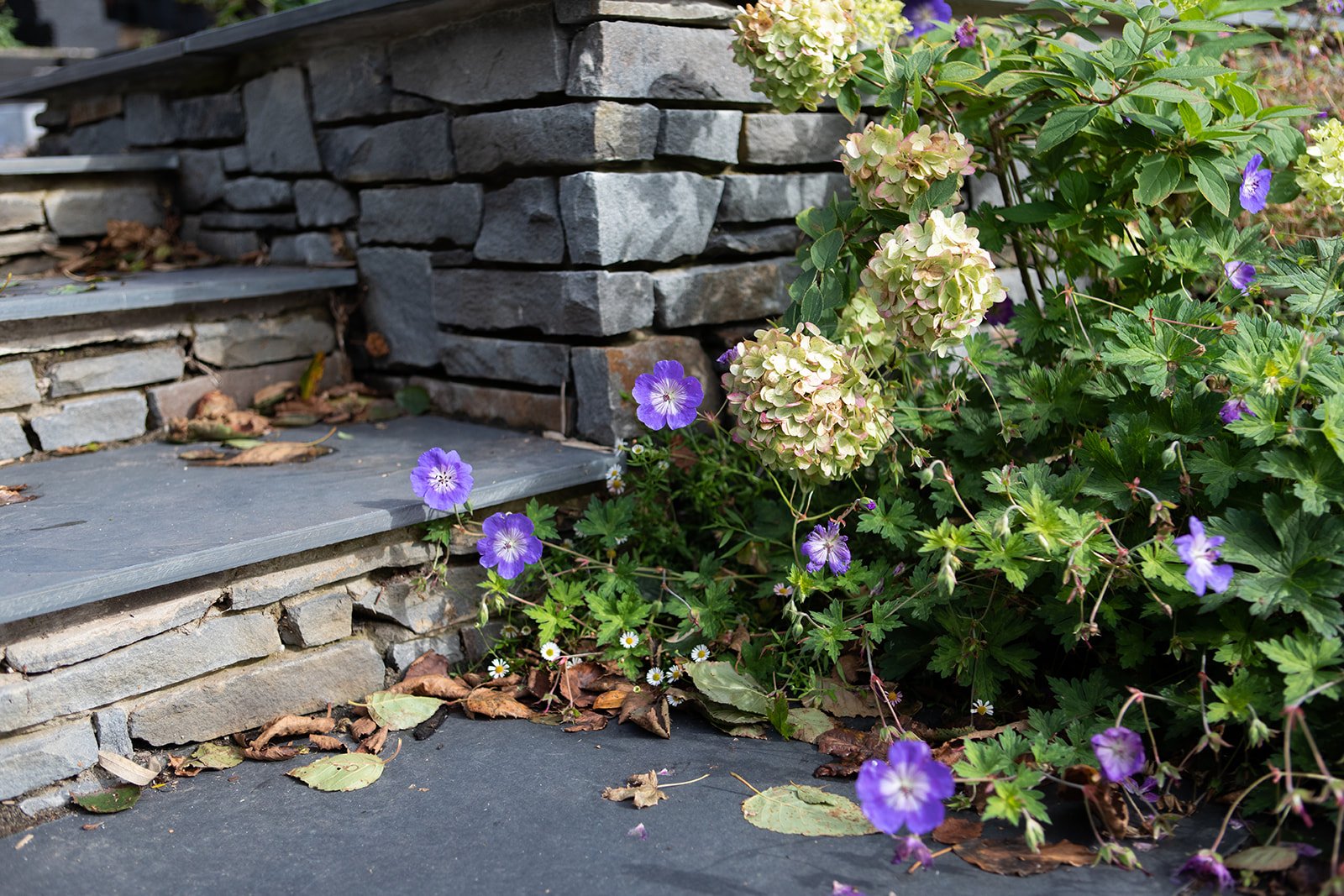Plant guide: Euphorbia
The euphorbia family of plants are really useful perennials for gardens. There are a huge range of different varieties, so there is almost certainly a perfect one for every spot, from big shrubs like Euphorbia mellifera (honey spurge) with its amazing umbrella-like leaves, to small groundcover plants like Euphorbia myrsinites (myrtle spurge) that creeps across gravel gardens…
Some of the most popular varieties – and ones we use the most are Euphorbia characias and Euphorbia paulstris, which both have incredible zingy lime flowers in the Spring, that grow above a whorl of leaves around stems that point upwards. They’re perfect paired with other flowering plants in contrasting colours, super reliable and low maintenance, and we include them in lots of our gardens for these reasons.
Botanical name: Euphorbia spp.
Plant type: Many euphorbias are evergreen perennials, keeping their leaves throughout the year, which means they can provide structure in beds year-round.
Growing conditions: Most euphorbias grow best in full sun, and warm conditions. Some can tolerate part shade – check the information each specific plant. Euphorbia amygdaloides do well in shade, so these are a good option for less sunny areas.
Most do best in a sheltered position, away from winds and frosts. South and West facing locations offer better protection and light levels.
Euphorbia amygdaloides var. Robbiae
Euphorbia myrsinites
Euphorbia mellifera
How to plant:
Euphorbias are usually bought as container plants. They are readily available in garden centres and nurseries throughout the year, though it is best to plant in the Spring or Autumn months, to help the plant establish as quickly as possible.
To plant, dig a hole as deep as the pot and twice as wide. Gently squeeze the plant out of the pot, put it in the hole and backfill. Water in well and continue to water for the first growing season in any dry spells, while it gets established. See our guide to planting out container grown plants for more detailed info.
Some types of euphorbia can be grown from seed, though germination can be tricky, as the seeds tend to only stay “viable” (capable of germinating) for a few weeks. If you’re growing from seed, make sure to sow them immediately. See our guide to sowing seeds for more information.
Uses:
Euphorbias make excellent cut flowers, as they last a long time in the vase, their stems are thick and don’t wilt, and they provide a vibrant backdrop for other flowers.
Always cut with gloves on to prevent coming into contact with the sap.
Since they bleed milky sap for a while after cutting, it’s best to condition them in their own container, away from any other flowers. See our guide to conditioning cut flowers for more info.
Care:
Euphorbias tend to be low-maintenance plants, most coping happily with droughts and needing little care or watering.
Some of the more tender varieties can’t tolerate hard frosts or snow, so wrapping these if very cold weather is forecast helps them to survive. (Most will die back to ground level, but grow back the following year, so if you do have a frosted plant, don’t despair, it may well recover in time…)
All euphorbias have sap that is strongly irritable to skin, so always take care when pruning, or if cutting flowers. The white sap is photosensitive, meaning it reacts to sunlight. If you spill a drop on your skin, and it is then exposed to the sun, it can cause blistering and pain, which can take a few days to go away. Always wear gloves and long sleeves when pruning Euphorbias, and make sure children know not to pick them.
Lots of euphorbias self-seed freely. If you don’t want to increase the numbers of plants you have, weed these out when they are still seedlings, before they have a chance to get properly established. (Always wearing gloves.)
Grow with:
Because of their bright lemon and lime colours, Euphorbias look especially good growing alongside plants with contrasting colours. Choose plants with flowers or stems of deep burgundy for contrast — vibrant tulips, that are in flower at the same time, can look especially striking with a backdrop of a larger euphorbia.
They also pair well with other easy maintenance perennials, such as ferns or hostas, for a verdant and lush combination.
Favourite varieties:
Euphorbia characias subsp. Wulfenii is a popular euphorbia, with bright lime flowers. It grows relatively tall, up to about 1m, and is always striking…
Euphorbia mellifera is one of the largest plants, growing into a domed shrub that can reach 2.5m tall, with huge leaves that look like umbrellas. It is tender so may be damaged by hard frosts, best planted in a sheltered and warm location.
Euphorbia myrsinites is a gravel garden favourite. Its stems creep along the floor, rather than growing upwards, with glaucous grey-green leaves with pointed ends that whorl around the stem. Again, this is one for a sunny spot. You can see some glorious examples at Beth Chatto’s gravel garden.
Euphorbia amygdaloides var. robbiae is a herbaceous euphorbia (it dies back below the ground over winter) with some of the brightest lime spring flowers. It can cope with heavier soils than a lot of Euphorbias.








